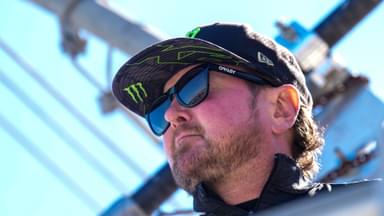NASCAR issued penalties against Ross Chastain and Austin Dillon for manipulating the Round of 8 race in Martinsville this year. A deserved punishment. But what’s funny is that the promotion can be accused of the same.
Advertisement
The number of times that the yellow flag was brought out citing some unseeable debris during crucial moments in races cannot be counted without a supercomputer.
These cautions, as frequent as they were till 2017, were called phantom cautions. Nobody knew where, when, or how they would come from. They would jump up on drivers at the most unexpected moments and completely change the outcome of a race.
One of the most glaring examples in which they were issued without a barrier is the 2015 Auto Club 400 in Fontana. Five debris cautions were thrown most of which were not shown on TV or were completely unnecessary.
As a result, Kurt Busch lost every advantage that he had from leading 65 laps in the race and lost a certain victory to Brad Keselowski. One would think NASCAR had something against the elder Busch brother and didn’t want to see him in victory lane.
Tony Stewart said in 2007 after losing out on a race to Jeff Gordon in a similar fashion, “I can’t understand how long the fans are going to let NASCAR treat them like they’re stupid before the fans finally turn on NASCAR. It’s like playing God. They can almost dictate the race instead of the drivers doing it.” NASCAR issued a fine of $100,000 against Stewart for his words.
The sudden drop in phantom cautions after 2017
The number of cautions that were called for debris on the track reduced significantly after 2017, the year in which stage breaks were introduced. This all but confirmed that NASCAR was just using a different name to manipulate races and be on the good side of the rule book. But why were phantom cautions thrown in the first place?
A race without drama is the worst thing in the eyes of the promotion. It is the job of the officials to make things interesting and keep the audience hooked to their TVs. They wrongly believed that unexplainable cautions would be welcomed and make races more thrilling to watch.
But they crossed a line at some point in time and people figured out that they were manipulating races to their will. They still do it. By disguising things as stage breaks. Several icons including Dale Earnhardt Jr. have spoken in length about this grayness that NASCAR is enveloped in.








